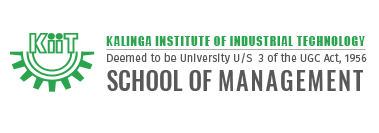Seminar Talk: Mr. Asit Mohapatra, Director, Raymond Limited
December 16, 2012
Ms.Anushree Paul & Ms.Sakshi Mishra of MBA-II were the Runners-up in the prestigious State Level Quiz Competition
January 5, 2013Topic: Succeeding in a Volatile Market
Date: December 28, 2012
Details:
To actually predict the market trends or any trend for the near future, one needs to be a fortune teller, said Mr. Shah in his interactive session. If anyone amongst us would’ve been a true expert in fortune-telling sciences, he would’ve easily predicted some of the most astonishing events of the world market that have come up in recent times. Eight years ago who would’ve known that brands like Jaguar and Land Rover would be owned by an Indian company, cricket matches would be held in T20 format, an affordable car (Tata Nano) would be available for the middle class, India winning three gold medals in Olympics or India hosting F1 races! But these trends are definitely the outcome of a larger process that was often visible, though seeping slowly through the market strata. Therefore, the reasons behind the emergence of certain trends can actually determine the development of an industry and thus it becomes very important to be acquainted with the current socio-economic factors that will shape the trends in the next eight years which will be a key to survive in this multidimensional volatile market. Starting from the last possible trend, it is evident that eight years from now we’ll be facing a fluctuating economy characterized by restricted customer spending, lean growth plans for companies, credit crisis etc. leading to divestment strategies, new market penetrations and rapid product repositioning. The focus will be on consumer comfort index indicating the comfort level of the buyer from shifting to essential goods from luxury items, thus indicating the first premise of a volatile market. Then comes the change in social structures which is primarily characterized by empowerment of women, emergence of middle class consumers and shift to triple income families and thus leading to a whooping 150% increase in disposable income, increase in retail health and internet service purchase .
This calls for the emphasis to be laid on making the products easily available and affordable. Shortage of raw materials coupled with disruption in supply chain, rising costs and spike in world population has given rise to alarming trends like food scarcity. The emergence of standardized procurement and logistics operations is the materializing response to this trend. Perhaps the most talked-about trend is the Awareness of Sustainability. There’s a hue and cry all over for companies to adopt environment friendly approaches and it becomes a mandate on the part of consumers to participate as well. Obviously ‘doing nothing’ will cease to be an option anymore as a time will come when there will be high emphasis on Personal Stability Index, i.e, not being eco-friendly will be an act to be penalized for. As a result there will be an emphasis on developing eco-friendly products currently a rarity these days. Now in order to develop products to fit the above mentioned trends there has to be advancement or adaption of associated technology which in itself is an important emerging trend. Adoption of consumer technologies enables companies to cut cost, save time and deliver innovative products at an affordable price. This is being characterized by mass adaptation of – usage of sophisticated consumer behavior studies to predict nature of demand coupled with efficient consumer communication channels which in turn is helping in stimulating demand for the relevant products. All is well if the above mentioned activities are in a blue ocean scenario but the current trend deviates from the ideal behavior and predicts that the global market is leading towards a red ocean scenario. The market models are changing and are characterized by complex paths to reach the real goal. This has given birth to hybrid models which aim at proper co-ordination and standardization of operational functions like common logistic models. Such hybrid models have strengthened the concept of Value chain and thus the adaptation of Smarter Supply chain options, characterized by mass adaptation of IT tools, mapping of business needs and importance of EDI for information sharing has come up as a deciding trend for the future. The apex of all efforts is consumer satisfaction and hence any trend generated by varying consumer personal behavior has an equal impact on future perspectives. Product Safety is another rising trend. Consumers are becoming more safety and health conscious and gone are the days when products used to get sold without any enquiry about their safety quotient, nutrient contents and hygiene issues. Consumers now need more information which will force companies to ensure that the defense and quality control measures are implemented. As evident from the discussion, these emerging trends are bound to have an impact on how the industry operates and correspondingly how we ensure our continued sustenance in the industry. Industries are already taking initiatives like devising new ways of working together, collaborative transport systems, specific industry training and regulations etc. to equip themselves to deal with the inevitable changes. We need to align ourselves with these trends to become more suitable for the industry.
Finally, though many of us aspire of being CEOs in the near future, we often commit common mistakes of adding unnecessary hierarchy levels, overlooking lack in team spirit, doing multi-audit inspections, collecting ideas only to overlook them or not disclose if they are being implemented etc. In order to be successful, we need not only be ready to face the changes in market scenarios corresponding to changes in trends but also should sharpen our analytical skills to enhance our judgments and decision-making prowess and thus not be restricted to the present but foresee the future ahead, eight years ahead to be precise.


